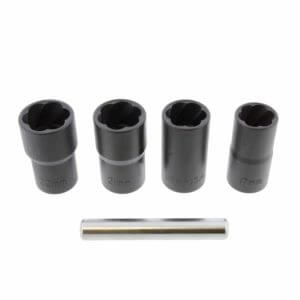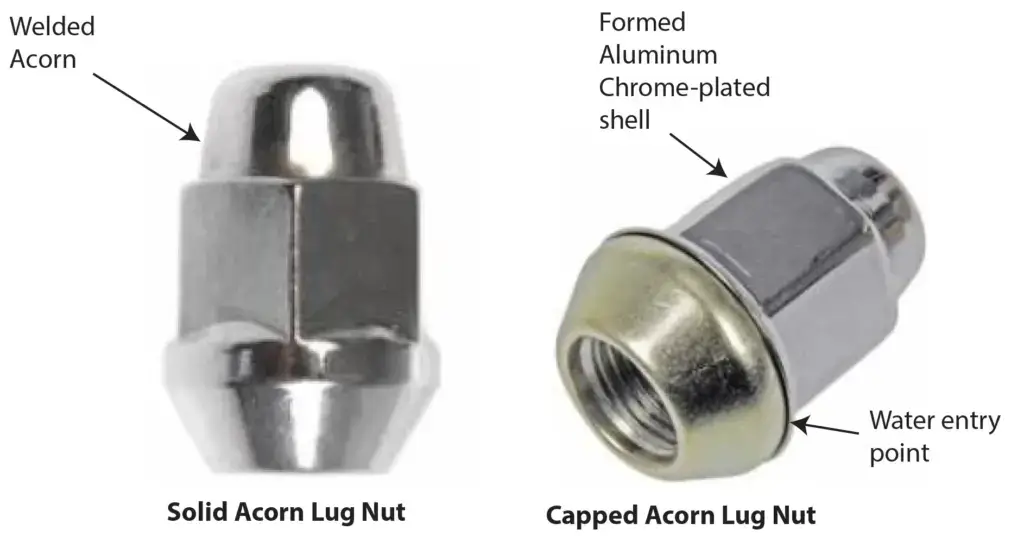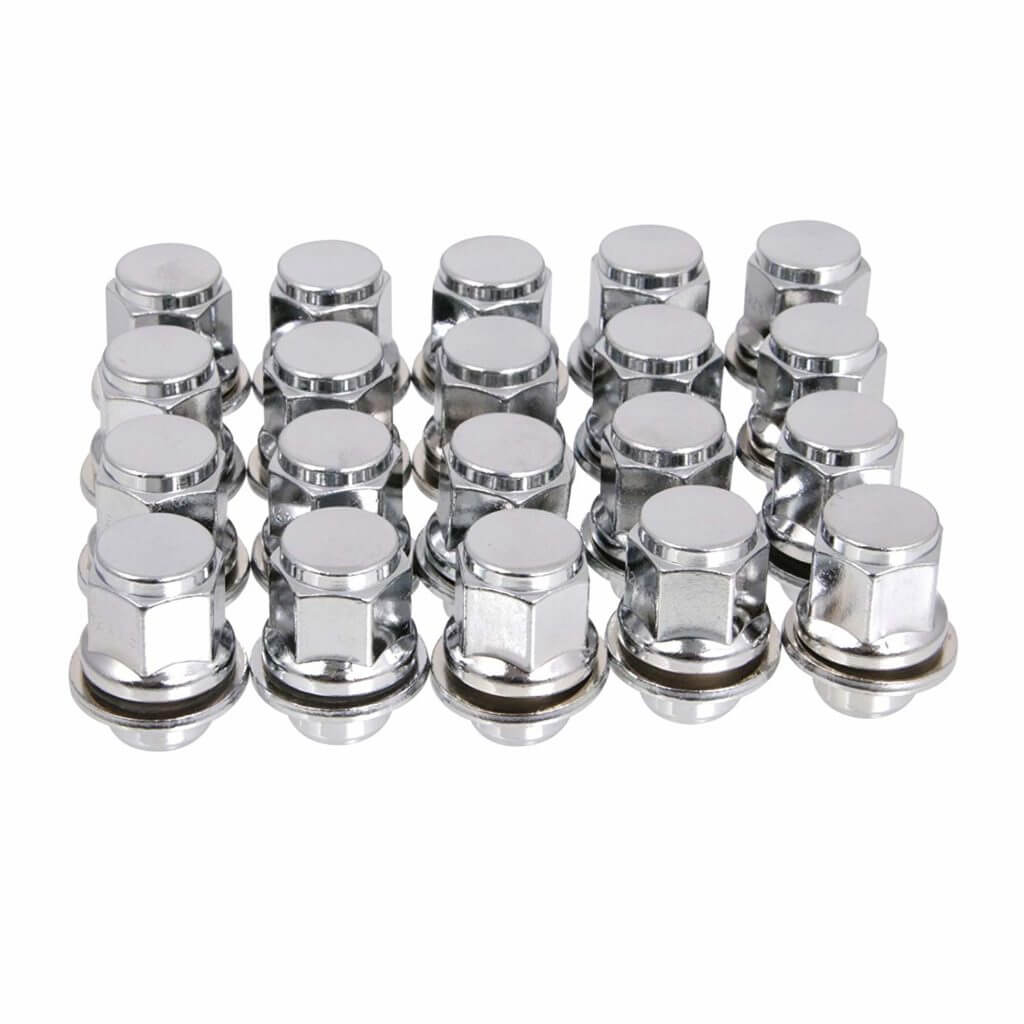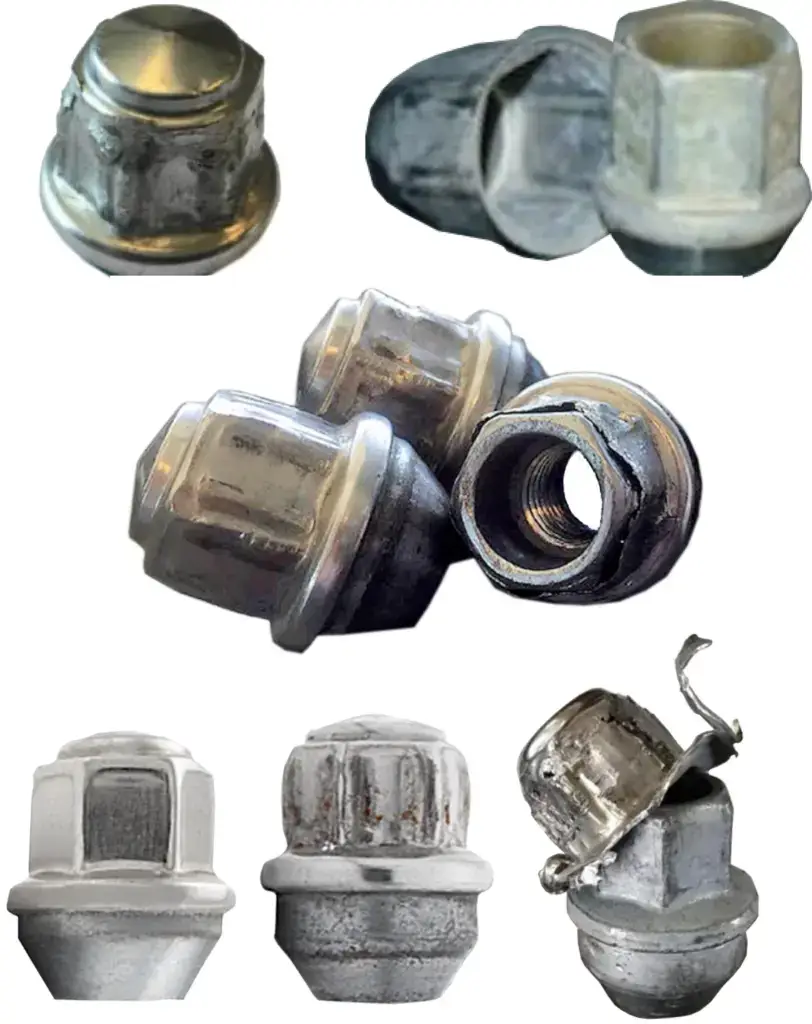Understanding the Ford Lug Nut Swelling Issue
The Causes and Solutions for the Ford Lug Nut Swelling Problem
Ford, a longstanding giant in the automotive industry, is renowned for its robust and reliable vehicles. However, even industry titans are not immune to mechanical issues, and one of the most perplexing problems that has surfaced in recent years is the Ford lug nut swelling issue. It started in the 2000 model year and continued through the 2015 model year. As the vehicles aged, owners experienced lug nuts that had swollen and could no longer be removed from the wheel using a normal socket.
The problem involved corrosion between the steel lug nut and an aluminum chromed overlay decorative cap. Water entered the gap between the two metal pieces. The water caused the steel to corrode, generating a rust bloom (also called rust jacking) that pushed out the sides of the decorative cap. Once swollen, it became difficult to remove the lug nuts. Worse yet, the tire iron fitted with the vehicle from the factory would no longer fit over the lug nuts, making it impossible for the driver to change a flat tire.
In a worst-case scenario, the Ford lug nut swelling problem could prevent a user or tech from properly tightening the lug nut, potentially causing the wheel to fall off.
Vehicles affected by the Ford lug nut swelling problem
The two-piece lug nuts were used on the Focus, Fusion, Escape, F150, C-Max, Expedition and F350 vehicles.
Removing the swollen Ford lug nut is tedious

This image shows special reverse grip lug nut removal tools
To remove the swollen Ford lug nut, the shop can sometimes try a larger socket, a “half-size socket” (19.5 or 21.5 mm), or a special extraction socket. In extreme cases, the only way is to use a hammer and chisel to cut through the acorn cap and then peel off the decorative chrome overlay.

Tool manufacturers have responded to the Ford Swollen Lug nut problem by offering half-size sockets that fit over the swollen lug nuts. They’re available in 18.5, 19.5, 21.5, and 22.5mm sizes.
The permanent solution to the Ford swollen lug nut problem
The only remedy is to replace the swollen lug nuts with a one-piece design
Once you or the shop removes the swollen lug nuts, you must replace them with a similar two-piece design (which will fail again) or with a single-piece style lug nut. The single-piece design is an acorn-style lug nut, which is stamped as a single piece and then chromed, thereby eliminating the rust-jacking issue.
If you have the swollen lug nuts removed and replaced with genuine Ford parts, the cost runs about $220 for the new parts. Or, you can opt for aftermarket lug nuts for about $79 for a full set for all four wheels.

Replace swollen lug nuts with a solid acorn style lug nut shown on the left. Avoid 2-piece lug nuts like the one on the right
Ford lug nut swelling lawsuit
The lug nut issue affected so many vehicles that a class action lawsuit was filed against Ford in 2017 alleging that the affected vehicles were unsafe due to the defective design that resulted in the inability to remove the lug nuts.
Ford responded to the lawsuit by claiming that the problem was not the lug nut design but instead was caused by the owner and shop using the wrong-sized wrenches, high-powered impact wrenches, and improperly calibrated torque wrenches that installed the lug nuts too tightly.
Ford claims that technicians or owners that over-tighten the lug nuts with hand or power tools can cause the chrome caps to mushroom. From that point on, the next tech must use a larger size socket. If they attempt to remove the lug nut using the correct size socket, they can further distort the cap, making it almost impossible to remove.
Ford’s response to the lawsuit states: “the plaintiffs talk about swollen lug nuts as if the lug nuts should be indestructible and the warranties should last forever.” The Plaintiffs position is that they don’t expect lug nuts to last forever, but they shouldn’t fail so soon.
Ford chose the two-piece design to save manufacturing costs.
Judge dismisses the lawsuit
On January 2, 2019 United States District Judge Stephen Murphy dismissed case 2:17-cv-12794 against Ford. In dismissing the case, the Judge determined that the plaintiffs would likely not prevail at trial. The Judge based the decision on Ford’s express warranty that stated:
“repair, replace, or adjust all parts on [a] vehicle that malfunction or fail during normal use during the applicable coverage period” if the vehicle “is properly operated and maintained” and “was taken to a Ford dealership for a warranted repair during the warranty period.” ECF 14-14, PgID 1131–32. The relevant warranty period is the earlier of three years or 36,000 miles and begins on the day the customer takes delivery of the vehicle or the day it is first put into service, again, whichever is earlier.”
Based on the warranty period and the timing of the plaintiff’s alleged harm, the damage they incurred came the expiration of the factory warranty. Only one of the plaintiffs presented a swollen lug nut within the warranty period, but he did not present his vehicle to the dealer as required by the new vehicle warranty terms.
The Judge went on to state prior case law which says: “For a repair-or-replace remedy to fail its essential purpose, however, the consumer must give the manufacturer an opportunity to repair or replace the alleged defect during the warranty period.
In other words, the plaintiffs were outside the warranty period.
What to do if you have Ford swollen lug nuts
To remove the swollen lug nuts, use a larger SAE or metric socket or a lug nut extraction tool, or use a hammer and chisel to break off the acorn cap and then peel off the aluminum cladding.
Then, replace the lug nuts with a set of single-piece chromed acorn-style lug nuts.

©, 2019 Rick Muscoplat
Posted on by Rick Muscoplat
